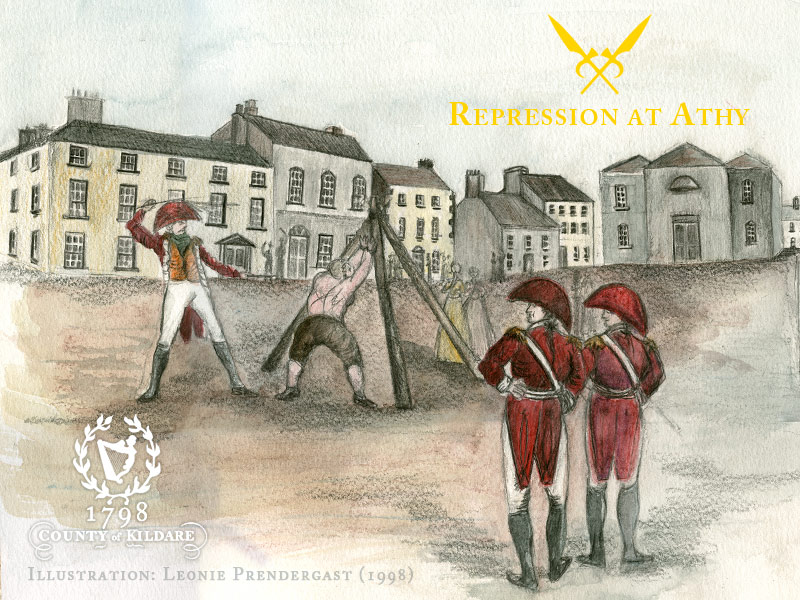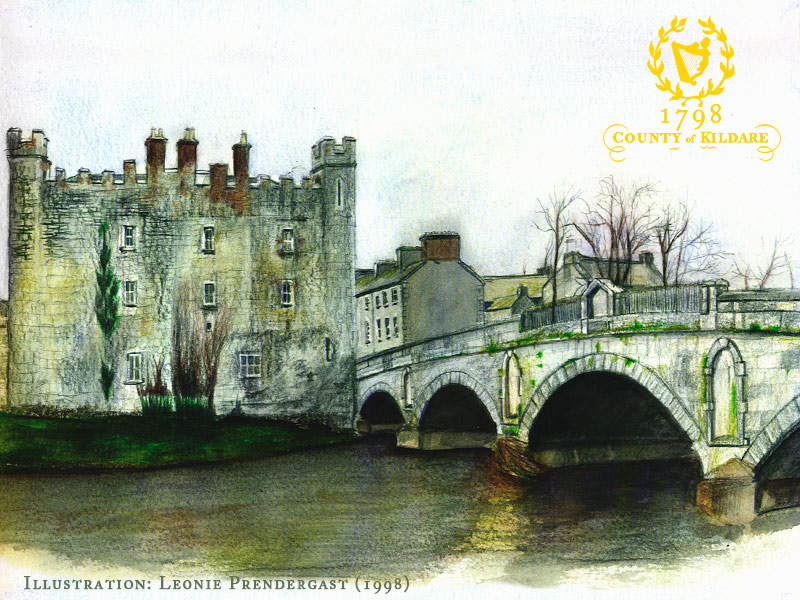Rebellion Towns & Villages

Athy
Despite being highly organised, the United Irishmen of Athy failed to rise in 1798. Men had gathered near the town but in insufficient numbers to attack the garrison, Athy being the second strongest in the county. The commander, Colonel Colin Campbell had a corps of yeoman infantry under his command as well as regular troops.
Strong action by the military prior to the rebellion, had subdued the area around Athy. In early May the ‘Triangles’ were introduced by Captain James Rawson in an effort to procure information against the United Irishmen.
On the 24th of May General Dundas sent orders to all of the garrisons in Co. Kildare to withdraw to Naas, however the messenger sent to Campbell was killed by rebel forces at the Athy Turnpike near Old Kilcullen. Subsequently Athy retained a strong garrison throughout the rebellion becoming a loyalist haven, as many loyalists from the surrounding areas took refuge in the town.

The 9th Dragoons, led by Captain Erskine who died at the Battle of Old Kilcullen on the 24th of May, were part of Campbell’s force. Campbell was responsible for recovering the villages of Narraghmore and Ballitore from the rebels, though the area was to remain disturbed for most of the year. The bulk of the rebels from Ballitore surrendered to Campbell at Ballindrum near the Moat of Ardscull on Wednesday the 30th of May.
On the 2nd of June the troops from Athy defeated a large party of rebels in the bogs near Cloney, killing 100 of them with no loss to the troops.
Rebellion Towns & Villages
Naas | Ballymore | Old Kilcullen | Knockaulin | Narraghmore | Ballitore | Athy | Monasterevin | Kildare Town | Rathangan | Gibbet Rath | Clane | Prosperous | Timahoe | Ovidstown | Surrender
